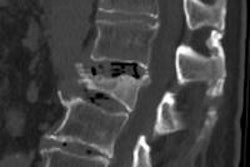Dear AuntMinnie Member,
The use of low-dose CT to screen high-risk individuals for lung cancer got an endorsement today from the American College of Chest Physicians (ACCP).
In the third edition of its evidence-based clinical practice guidelines, ACCP recommended low-dose CT screening for people at risk of lung cancer due to age and smoking history. The group previously had not recommended screening.
The guidelines call for the creation of a registry to help answer many of the open questions about screening, as well as for the establishment of quality metrics to govern screening programs. But the new recommendations closely follow more conservative guidelines released last year that disappointed many advocates of CT lung screening. Learn precisely what the organization is recommending by clicking here.
In other CT screening news, research presented at this week's American Association for Thoracic Surgery meeting found that low-dose CT was four times as sensitive as the commonly used x-ray protocol for detecting lung cancer recurrence. The study group determined that CT could find new lesions early enough to enable surgical resection before cancer could spread beyond the lungs. Read more by clicking here, or visit our CT Digital Community at ct.auntminnie.com.
ED and imaging
It's probably no surprise, but the number of imaging studies being done in the emergency department (ED) has risen as a proportion of overall imaging volume over the past 10 years, according to a study led by radiology economics researcher Dr. David C. Levin.
Dr. Levin and colleges analyzed imaging volume at four key locations: hospital outpatient sites, hospital inpatient departments, private offices, and emergency departments. The ED setting was the only place of service that saw major growth, while hospital inpatient imaging declined. What are the ramifications of the study? Find out by clicking here.
CAD for chest imaging
Meanwhile, researchers from Switzerland put a variety of image processing protocols through their paces in a study we're highlighting this week in our Advanced Visualization Digital Community.
The researchers used different combinations of bone-suppression, dual-energy, and computer-aided detection (CAD) software to find out which one best detected lung nodules on chest radiography studies. Learn which protocol came out ahead by clicking here, or visit our Advanced Visualization Digital Community at av.auntminnie.com.



















